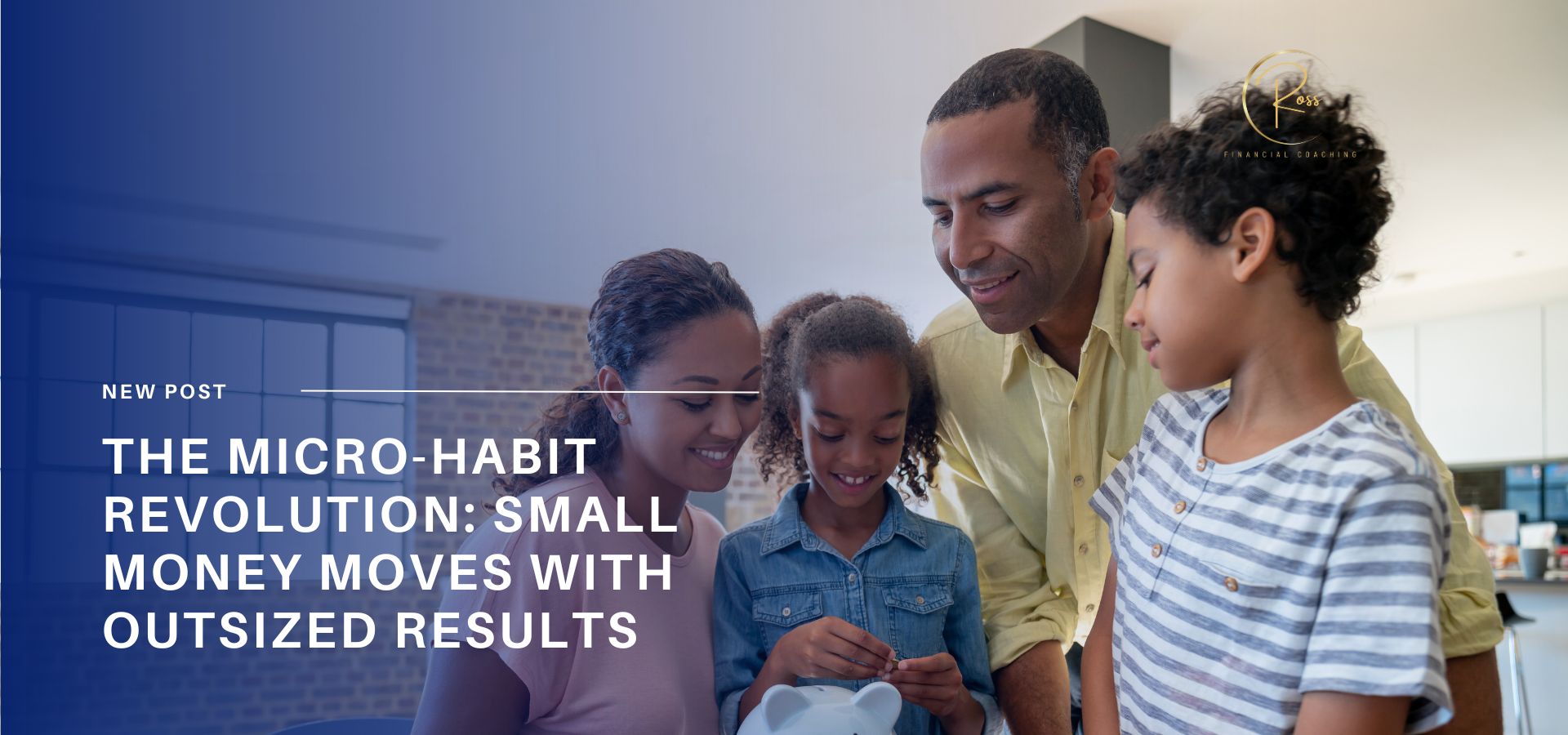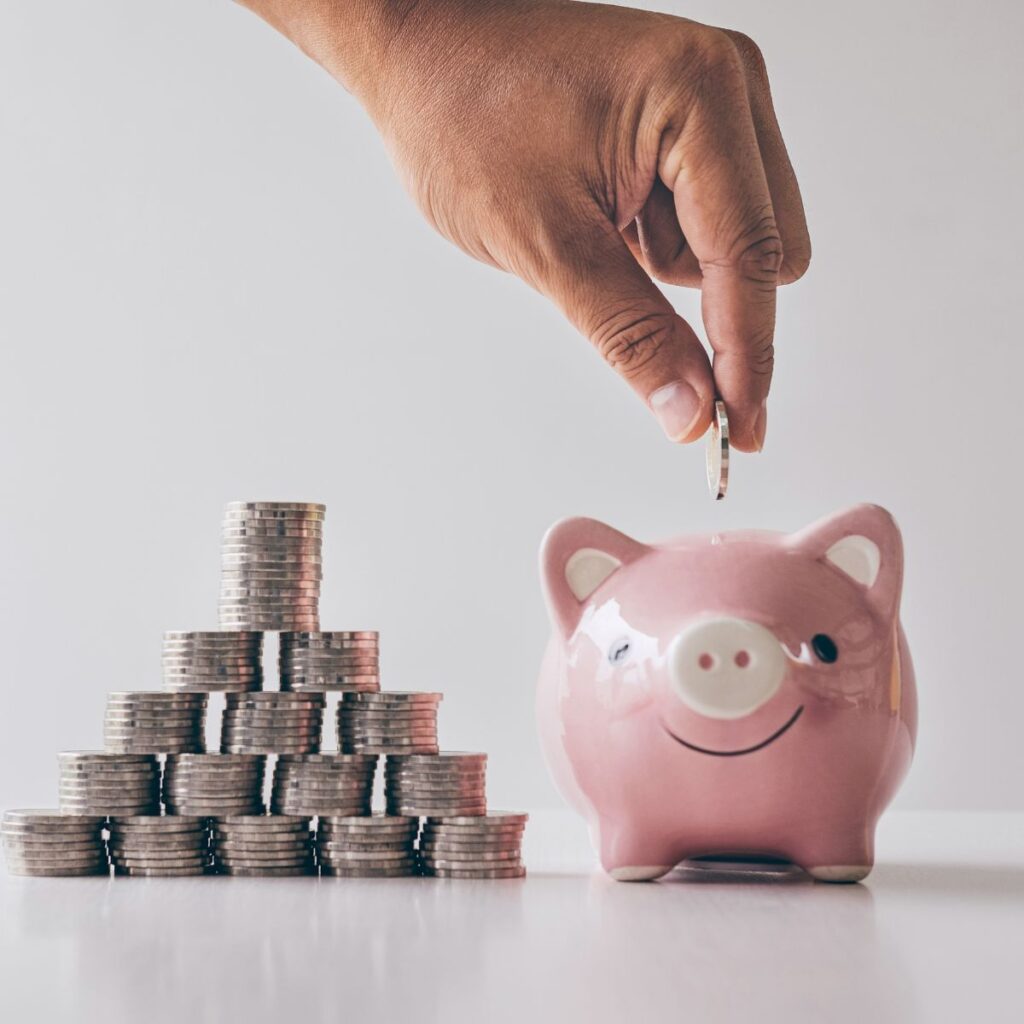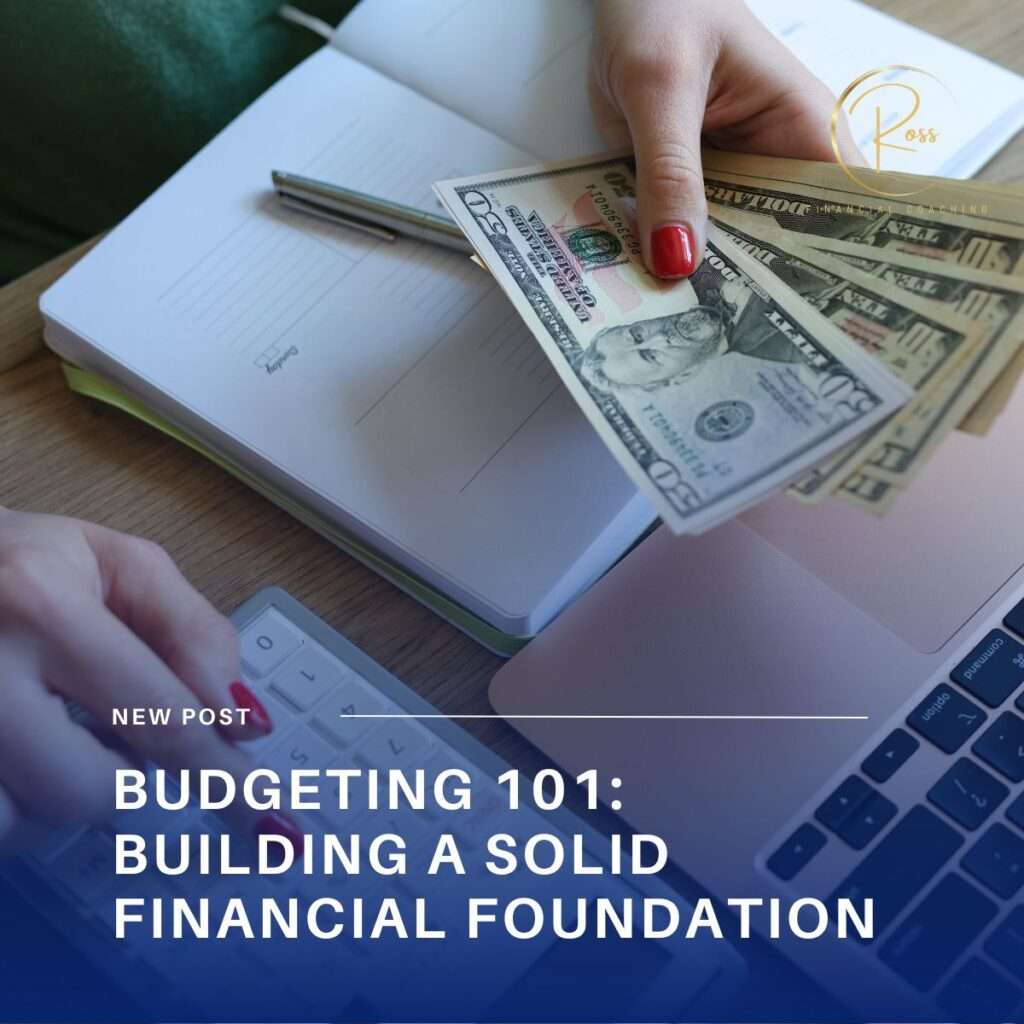
Reading Time: 9 minutes
You’ve probably heard the quote: “We overestimate what we can accomplish in a day, and underestimate what we can accomplish in a year.”
Nowhere is this more true than with money.
We dream of financial transformations – paying off all debt in one heroic effort, creating the perfect budget that solves everything, or finding that magical investment that instantly creates wealth.
Meanwhile, we completely overlook the real secret to financial success: tiny, consistent actions that compound dramatically over time.

The Hidden Power of Financial Micro-Habits
A financial micro-habit has three essential qualities:
- It takes less than two minutes to complete
- It requires minimal willpower to maintain
- It creates compound results over time
These aren’t grand financial strategies. They’re small, almost invisible actions that fit seamlessly into your existing routine. But their impact? Anything but small.
Why Micro-Habits Work When Everything Else Fails
Think about your past attempts at financial improvement. The budgets abandoned by February. The spending trackers you quit updating. The ambitious savings plans that lasted until the first unexpected expense.
These big initiatives failed not because you lacked motivation or discipline, but because they required too much change too quickly.
Micro-habits succeed because they work with your brain’s natural wiring:
1. They Bypass Willpower Limitations
Your willpower is a finite resource. When it’s depleted, even simple tasks become challenging.
Micro-habits require so little willpower that you can maintain them even on your worst days.
2. They Eliminate Decision Fatigue
Each decision you make throughout the day depletes your mental energy.
Micro-habits, once established, become automatic – requiring no decisions and preserving your mental bandwidth.
3. They Create Identity Shifts
Small actions consistently taken reshape how you see yourself.
When you take a tiny financial action every day, you begin to think of yourself as “someone who’s good with money” – and your other financial behaviors naturally begin to align with this identity.
The 10 Most Powerful Financial Micro-Habits
Let’s explore the small actions with the biggest long-term impact:
1. The “First Funds” Transfer
The Habit: The moment your paycheck arrives, immediately move some amount – even just $5 – to savings or investments.
The Impact: This single habit ensures you always pay yourself first, no matter what. The amount matters less than the consistency.
The Compound Effect: Even small amounts add up dramatically over time. Just $20 per paycheck invested at a modest 7% return creates over $52,000 in 30 years.
2. The “Subscription Spotlight”
The Habit: On the 1st of each month, review just ONE subscription or recurring charge.
The Impact: You’ll naturally eliminate services you no longer value and negotiate better rates on those you keep.
The Compound Effect: Cutting even $30 in monthly subscriptions saves $360 per year – or over $10,800 over 30 years without factoring in investment growth.
3. The “Money Minute”
The Habit: Spend 60 seconds each morning looking at your primary accounts.
The Impact: This quick check creates awareness without obsession. You’ll catch issues early and maintain a consistent connection to your finances.
The Compound Effect: Regular awareness prevents the small leaks that drain most financial plans over time.
4. The “Round Up” Reflex
The Habit: Mentally round up every purchase to the nearest dollar (or $5) and transfer the difference to savings.
The Impact: This creates painless savings from money you’ve mentally already spent.
The Compound Effect: These small amounts often add up to $500-$1,000 annually for the average person.
5. The “Wait 24” Pause
The Habit: For non-essential purchases over a certain amount, wait 24 hours before buying.
The Impact: This small pause breaks the impulse cycle without requiring you to say “no” to things you truly value.
The Compound Effect: Most people find they naturally eliminate 40-70% of impulse purchases without feeling deprived.
6. The “Gratitude Before Spending” Moment
The Habit: Before making any non-essential purchase, briefly note one thing you’re grateful for about your current financial situation.
The Impact: This creates a positive association with financial responsibility and naturally reduces impulse spending.
The Compound Effect: This simple mindfulness practice often reduces discretionary spending by 10-15% without budgeting.
7. The “Bill Shrink” Challenge
The Habit: Each quarter, pick one regular bill and spend 10 minutes finding a way to reduce it.
The Impact: You’ll consistently lower your fixed expenses, creating permanent improvements to your cash flow.
The Compound Effect: Reducing fixed expenses by even $100 monthly creates $1,200 yearly in permanent savings.
8. The “Skill Builder” Investment
The Habit: Spend just 5 minutes daily learning one new financial concept.
The Impact: You’ll gradually build financial literacy without overwhelm.
The Compound Effect: Financial knowledge compounds dramatically over time, improving every money decision you make.
9. The “Victory Log” Practice
The Habit: Record every positive financial action, no matter how small, in a dedicated notebook or app.
The Impact: You’ll reinforce positive behaviors and build financial confidence.
The Compound Effect: As your list grows, your financial identity shifts, making better money choices feel natural rather than forced.
10. The “Goal Glimpse” Ritual
The Habit: Spend 30 seconds each day visualizing your primary financial goal.
The Impact: This maintains motivation and helps align daily decisions with long-term objectives.
The Compound Effect: Regular visualization dramatically increases the likelihood of achieving financial goals.
Your 30-Day Micro-Habit Plan
Here’s a simple way to implement your first financial micro-habit:
Days 1-10: Start Incredibly Small Begin with an action so tiny it almost seems pointless – like saving $1 a day or checking one account for 30 seconds. This makes starting painless.
Days 11-20: Build Gradually Once you’re consistent, gently increase – maybe save $2 instead of $1, or review two accounts instead of one. Keep it easy.
Days 21-30: Make It Automatic Focus on making the habit part of your regular routine. Maybe link it to your morning coffee or your evening wind-down.
After 30 days, your micro-habit will require minimal effort to maintain, while starting to generate real financial results.
The Compound Effect
The true power of financial micro-habits emerges over time. Small actions, consistently taken, create exponential results through:
- Mathematical Compounding: Small amounts invested regularly grow exponentially
- Behavioral Compounding: Each small success makes the next one easier
- Knowledge Compounding: Learning compounds, improving future decisions
- Identity Compounding: You begin acting in alignment with your new self-image as a financially savvy person
Remember: Financial success rarely comes from dramatic transformations. It’s built one tiny action at a time, day after day, until one day you look up and realize how far you’ve come.
Ready to harness the power of financial micro-habits? Let’s discuss which tiny changes would create the biggest impact in your financial life.


